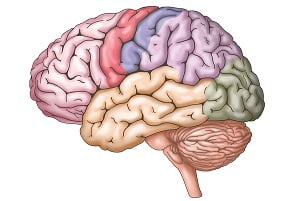
What are the complications of carpal tunnel surgery? What problems can you face after carpal tunnel surgery?
Surgical procedure is a very commonly used treatment for carpal tunnel syndrome. It is done by either conservative open surgery or as an endoscopic minimally invasive surgery method.
Like with any surgery, there are possible complications of carpal tunnel surgery. While the chances of these complications to get severe are small, but you should nevertheless understand the possible risks before going for the surgery.
Some of the possible complications and problems after carpal tunnel surgery are:
- Infection
- Excessive bleeding
- Injuries to the surrounding blood vessels
- Excessive pain in the operated area
- Stiffness of the wrist
- Excessive scarring
- Injury to the median nerve itself or the branches coming out of it
- Sensitive scar
- Weakness
- No relief in initial complaint or persistent symptoms
- Tingling sensations and numbness
- Incomplete ligament release
- Recurrence of symptoms
- Anaesthesia related problems
More: Carpal Tunnel Surgery Aftercare: Driving After Carpal Tunnel Surgery
More: Exercises to Relieve Carpal Tunnel Syndrome Pain
Is carpal tunnel surgery painful? What kind of pain you will have after the carpal tunnel surgery?
Pain after carpal tunnel surgery is very common and its duration depends on many factors. Usually pain lasting for six months after carpal tunnel surgery is regarded as normal.
Commonly, after a traditional open surgery of the carpal tunnel, you may feel pain in the area of the incision rather than endoscopic carpal tunnel release. You may experience two types of pain in your palm of the hand after carpal tunnel surgery which can be categorised as incision pain and pillar pain.
What is incision pain after the carpal tunnel syndrome surgery?
It is the pain felt directly at the site of the incision. This kind of pain is typically only present for days or weeks after the surgery.
Pain can be alleviated with the help of incision protection and it’s important for you to remember that lifting or gripping should be avoided for several weeks after the carpal tunnel surgery.
What is pillar pain after the carpal tunnel surgery?
It is the pain experienced in the thicker parts of the palm, called the thenar and hypothenar eminence in the vicinity of the incision. This kind of pain is located in the regions where the transverse ligament attaches to the carpal bones and forms the carpal tunnel. This is the location where muscles of the palm of the hand can be located. The pain may take several months to resolve after the surgery and it is one of the most common and troublesome complications after the carpal tunnel surgery.
Pillar pain can be treated by rest, massage, and hand therapy and an additional surgery for the treatment of pillar pain is generally found to be ineffective.
What is persistent numbness after carpal tunnel surgery? How long does the numbness last after the surgery?
Many of the patients have persistent symptoms of numbness and tingling after carpal tunnel surgery. There are two reasons responsible for this post surgery problem which includes:
- Incomplete release of the transverse carpal ligament
- A chronic compression to the median nerve in the carpal tunnel
Incomplete release of the transverse carpal ligament is a complication of carpal tunnel surgery that is more commonly seen in case of endoscopic surgery and leads to persistent compression on the median nerve, and therefore persistent symptom of numbness is experienced.
Some patients who have carpal tunnel syndrome from a long time may have persistent numbness and tingling even after carpal tunnel release surgery and this is thought to be because of significant nerve damage due to a long- standing compression.
In some people, the nerve damage gets to an extent from where restoration of sensation is practically impossible. A nerve test can help in diagnosing the severity of the nerve compression prior to surgery.
Do you get pain in thumb and wrist after carpal tunnel surgery?
In some cases, pain in thumb get worse after carpal tunnel surgery, which might cause stiffness as well.
Your wrist might get swollen with continuous pain. Your doctor most probably will advise you to ice the swelling and wear a splint at night while sleeping and keep your hand elevated to stop further swelling and pain. You may experience a loss of strength of your wrist, and a loss of grip in your palm. However these problems can be addressed by hand therapy and some exercises.
More: Exercises to Prevent Carpal Tunnel Syndrome
More: Exercises for Carpal Tunnel Syndrome
More: Carpal Tunnel Pain: What Relieves Carpal Tunnel Pain?






